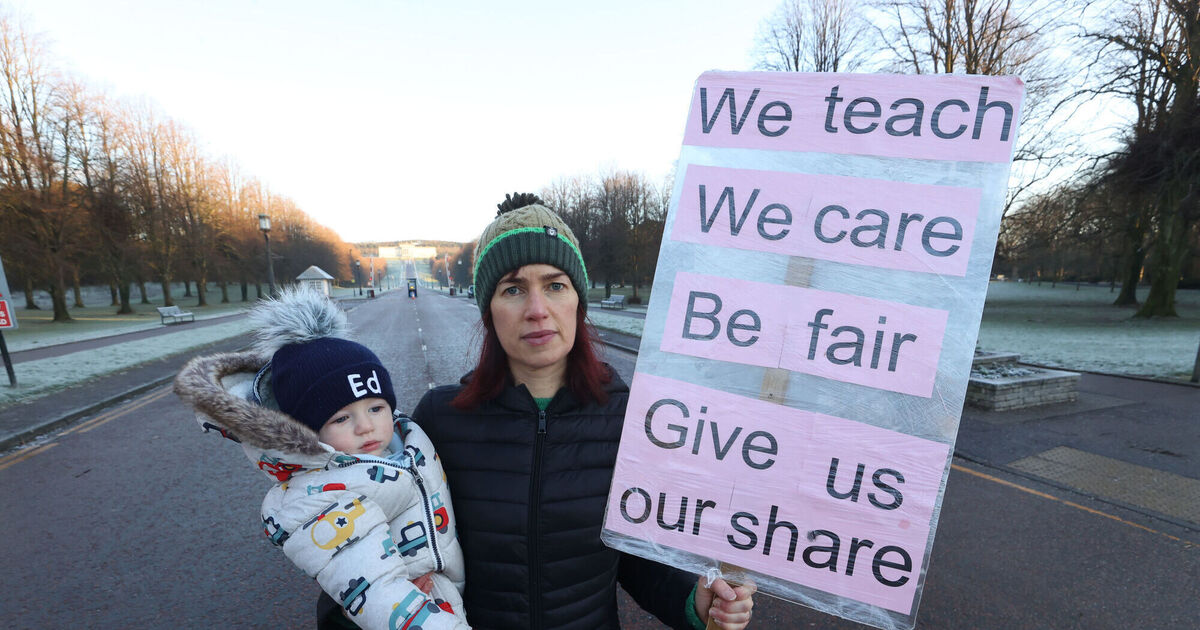The majority of Northern Ireland’s public sector workers are on strike on Thursday after the last round of negotiations between the main political parties and the British government collapsed.
As a result, large-scale rallies are being held in many cities across the country.
Here’s a detailed explanation of what’s happening and why.
Approximately 150,000 public sector workers are participating in strike action.
Bus and train services have been suspended in Northern Ireland since Thursday, many schools have been closed and there has been widespread disruption to the health service.
Large gatherings were seen in the cities of Belfast, Derry, Enniskillen and Omagh, with workers standing out in sub-zero temperatures.
A total of 16 trade unions are participating in this action and it’s all about payments.
Unions point out that the wage rises that have taken place in other parts of the UK have not been seen in Northern Ireland.
For example, the starting salary for a teacher in Northern Ireland is £24,137 (€28,100), which is much lower than in Scotland, which is £32,317 (€37,644).
Teacher salaries in both England and Wales start from £30,000 (€34,945).
The situation is similar for bus and train drivers and nurses.
The lack of a pay structure is largely due to Stormont’s current political climate.
In the May 2022 general election, Sinn Féin topped the polls, winning 27 seats to the DUP’s 25. This means Sinn Féin will be named Prime Minister and the DUP will be named Deputy Minister.
However, the DUP has since rejected this, citing problems with the post-Brexit deal.
That’s why despite several attempts by the UK government, including proposing a £3.3bn (€3.8bn) financial package that was supposed to include £600m (€700m) to resolve the wage issue. However, power-sharing has not been restored.
Chris Heaton-Harris, UK’s Northern Ireland minister, insisted he had no authority to release the funds unless Stormont returned.
This will be a 24-hour strike, but the union says there may be more picketing in the future.
